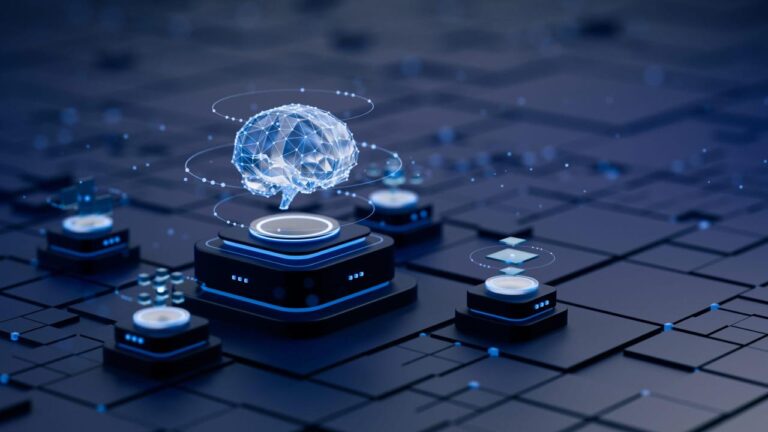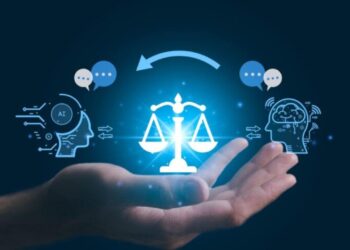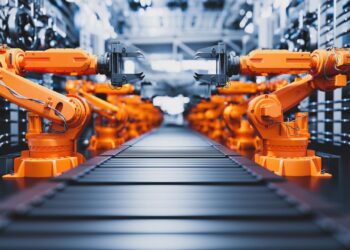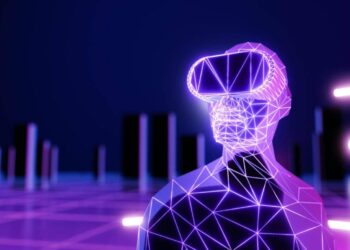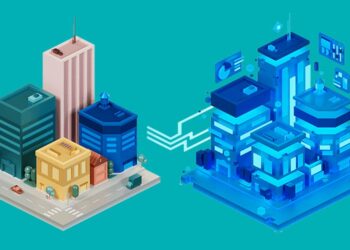The Genesis of Automation
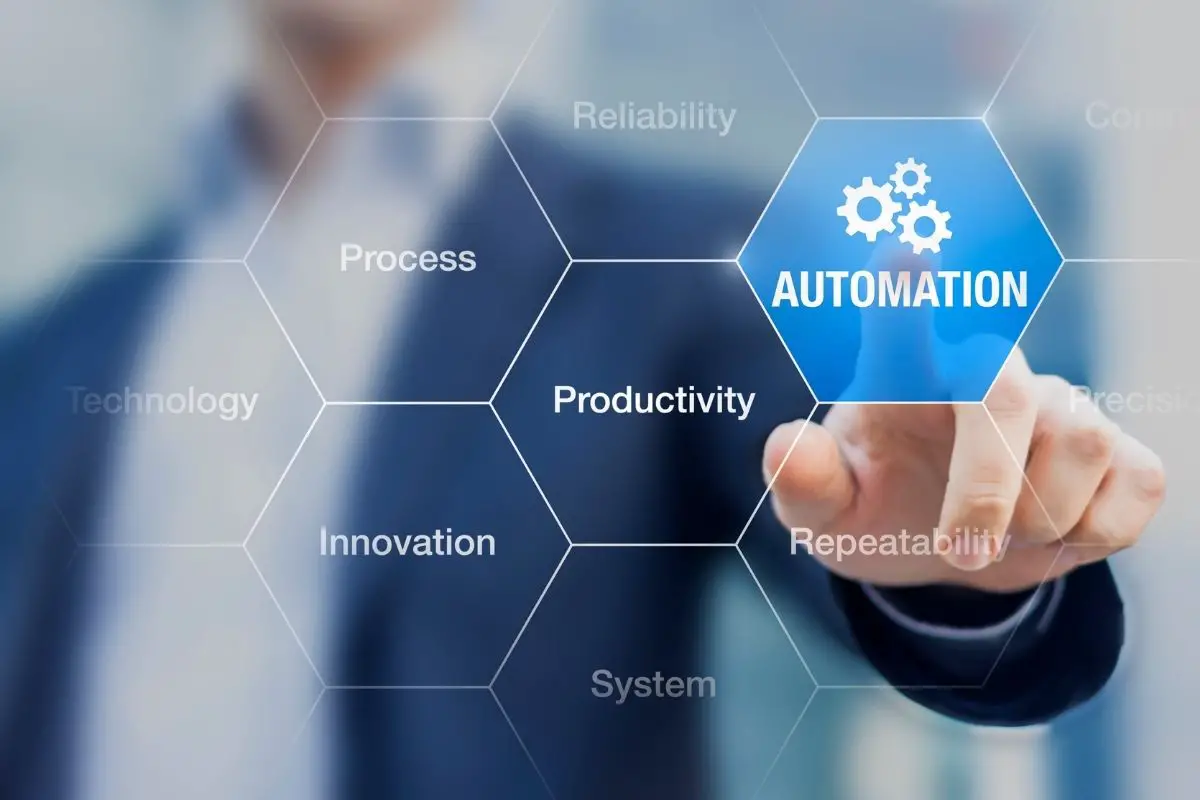
Automation, at its core, is about making processes or systems operate without human intervention. Its evolution has moved from simple mechanical processes to complex, intelligent systems.
A. Early Automation
The concept of automating work began with the Industrial Revolution, focusing on mechanizing physical labor.
- Mechanization: Replacing manual human effort with machines, typically powered by steam, water, or later, electricity. Examples include power looms and assembly lines.
- Fixed Automation: Machines designed to perform a single, repetitive task with high precision and speed, common in early manufacturing. These systems lacked flexibility.
- Mass Production: Automation enabled economies of scale, leading to the widespread availability of goods and the rise of factory work.
B. Programmable Automation
The mid to late 20th century saw the introduction of electronics and computing, allowing for more flexible automation.
- Robotics (Early Industrial Robots): The first industrial robots, like Unimate (1961), could be programmed to perform a sequence of tasks, albeit in highly controlled environments.
- Computer Numerical Control (CNC): Computerized control of machines that manipulate tools, enabling the production of complex parts with greater accuracy and less human intervention.
- Programmable Logic Controllers (PLCs): Digital computers used for automation of electromechanical processes, common in factories for controlling assembly lines.
These advancements brought a degree of flexibility, but tasks still needed to be explicitly programmed.
C. Intelligent Automation
The current wave of automation is defined by the integration of Artificial Intelligence (AI), leading to systems that can learn, adapt, and make decisions.
- Artificial Intelligence (AI): The ability of machines to simulate human intelligence, including learning, problem-solving, and decision-making. AI is the brain behind intelligent automation.
- Machine Learning (ML): A subset of AI that allows systems to learn from data without explicit programming, enabling them to improve performance over time (e.g., recognizing patterns, making predictions).
- Deep Learning (DL): A more advanced form of ML using neural networks to process complex data (e.g., images, speech) for tasks like computer vision and natural language processing.
- Robotics (Advanced): Modern robots equipped with AI can perceive their environment, learn new tasks, collaborate with humans, and operate autonomously in unstructured settings.
- Hyperautomation: Coined by Gartner, this refers to the application of advanced technologies, including AI and ML, to increasingly automate processes and augment humans. It goes beyond simple process automation to orchestrate multiple tools.
- Cognitive Automation: Systems that mimic human thought processes, such as understanding natural language, interpreting data, and making judgments, often used in back-office operations.
This evolution from rigid mechanization to intelligent, adaptable systems is what makes the current wave of automation so profoundly transformative.
The Core Technologies Driving Automation’s Surge
The current era of automation is powered by a powerful synergy of advanced computational and mechanical technologies.
A. Artificial Intelligence (AI) and Machine Learning (ML)
AI is the indispensable intelligence behind today’s automation, enabling systems to go beyond pre-programmed instructions.
- Computer Vision: Allows automated systems (e.g., robots, drones, security cameras) to “see” and interpret visual information, enabling object recognition, quality inspection, navigation, and facial recognition.
- Natural Language Processing (NLP): Enables machines to understand, interpret, and generate human language, fundamental for chatbots, virtual assistants, automated customer service, and document analysis.
- Robotics Control: AI algorithms allow robots to learn complex movements, adapt to dynamic environments, and interact safely with humans.
- Predictive Analytics: ML algorithms analyze vast datasets to forecast demand, predict equipment failures (for predictive maintenance), or identify patterns for optimized decision-making (e.g., in logistics, finance).
- Reinforcement Learning: AI agents learn optimal strategies by trial and error in simulated environments, then apply this knowledge to real-world automated tasks.
B. Robotics (Physical Automation)
Robots are the physical embodiment of automation, performing tasks in the real world.
- Industrial Robots: Traditional large, heavy-duty robots for manufacturing tasks like welding, painting, assembly, and material handling. They are becoming more adaptable and intelligent.
- Collaborative Robots (Cobots): Designed to work safely alongside humans in shared workspaces, often assisting with repetitive, ergonomic, or precise tasks. They are equipped with sensors for safe interaction.
- Autonomous Mobile Robots (AMRs): Robots that navigate environments autonomously, used in warehouses for moving goods, in hospitals for delivering supplies, or in public spaces for cleaning and delivery.
- Exoskeletons: Wearable robotic devices that augment human strength, endurance, or assist with rehabilitation, transforming physically demanding jobs.
- Drones (Unmanned Aerial Vehicles – UAVs): Used for aerial inspection, delivery, mapping, surveillance, and precision agriculture.
C. Robotic Process Automation (RPA) (Software Automation)
RPA refers to software robots (bots) that automate repetitive, rule-based digital tasks, mimicking human interaction with software applications.
- Desktop Automation: Bots perform tasks like data entry, form filling, copying and pasting, and report generation across various applications (e.g., ERP, CRM, legacy systems).
- Back-Office Efficiency: Widely adopted in finance, HR, customer service, and IT for automating administrative processes.
- Non-Invasive: RPA bots interact with existing systems through their user interfaces, requiring no complex API integrations.
D. Internet of Things (IoT)
IoT provides the sensors and connectivity that feed data to automated systems, enabling them to react to the physical world.
- Data Collection: Billions of connected sensors and devices collect real-time data about environmental conditions, asset status, and operational parameters.
- Real-time Monitoring: IoT data enables automated systems to monitor processes and identify anomalies instantly.
- Automated Response: Triggers automated actions based on sensor data (e.g., smart thermostats adjusting temperature, smart factories optimizing energy).
E. Cloud Computing and Edge Computing
These computing paradigms provide the necessary infrastructure for automation.
- Cloud Computing: Offers scalable computational power and storage for training complex AI models, managing large datasets, and orchestrating widespread automation deployments.
- Edge Computing: Brings processing power closer to the data source (at the “edge” of the network), enabling real-time decision-making, ultra-low latency responses, and reduced bandwidth usage, critical for autonomous systems and industrial automation.
Automation’s Transformative Impact Across Industries
The widespread adoption of automation is reshaping operations, enhancing capabilities, and redefining productivity across virtually every sector of the global economy.
A. Manufacturing and Industrial Production
Automation has been foundational in manufacturing, but the current wave is creating “smart factories.”
- Lights-Out Manufacturing: Highly automated factories capable of operating with minimal human presence.
- Flexible Production Lines: Robots that can quickly be reprogrammed or reconfigured to produce different products, adapting to changing market demands.
- Predictive Maintenance: IoT sensors on machinery, combined with AI, predict equipment failures, enabling proactive maintenance and eliminating costly downtime.
- Automated Quality Control: AI-powered vision systems inspect products with incredible speed and accuracy, detecting defects that human eyes might miss.
- Worker Safety: Automating dangerous or repetitive tasks reduces workplace accidents and ergonomic injuries.
B. Logistics and Supply Chain
Automation is revolutionizing how goods are stored, moved, and delivered.
- Automated Warehouses: Robots (AMRs, AS/RS systems) handle picking, packing, sorting, and storage, dramatically increasing throughput and efficiency.
- Autonomous Delivery Vehicles: Drones and ground robots for last-mile delivery, reducing costs and increasing speed.
- Route Optimization: AI-powered systems optimize delivery routes, considering traffic, weather, and demand.
- Port Automation: Automated cranes and vehicles handle containers at ports, improving efficiency and safety.
- Inventory Management: Automated systems track inventory levels in real-time, preventing stockouts and overstocking.
C. Healthcare
Automation is enhancing medical procedures, administrative tasks, and patient management.
- Robotic Surgery: Precision robots assist surgeons in minimally invasive procedures, leading to greater accuracy, less trauma, and faster patient recovery.
- Lab Automation: Automated systems for high-throughput screening, sample analysis, and drug discovery, accelerating research.
- Hospital Logistics: Autonomous robots transport medications, lab samples, and linens, freeing up medical staff for direct patient care.
- Diagnostic Automation: AI-powered systems analyze medical images (X-rays, MRIs) or pathology slides, assisting in faster and more accurate diagnoses.
- Pharmacy Automation: Robots dispense medications, reducing errors and improving efficiency in pharmacies.
- Remote Patient Monitoring: Automated systems collect and analyze patient data from wearables, alerting caregivers to critical changes.
D. Customer Service and Support
Automation is transforming how businesses interact with their customers.
- Chatbots and Virtual Assistants: AI-powered bots handle routine inquiries, provide instant answers, and guide customers, improving response times and freeing human agents for complex issues.
- Automated Ticketing Systems: Automatically route customer queries to the appropriate department or agent.
- Personalized Recommendations: AI algorithms automate the delivery of tailored product suggestions based on customer behavior.
- Sentiment Analysis: Automated tools analyze customer feedback to gauge sentiment and identify areas for improvement.
E. Finance and Banking
Automation is streamlining back-office operations and bolstering security.
- Robotic Process Automation (RPA): Automating tasks like data entry, reconciliation, report generation, and compliance checks.
- Algorithmic Trading: Automated systems execute trades at high speeds based on market data analysis.
- Fraud Detection: AI algorithms automatically detect suspicious transaction patterns in real-time, preventing financial crime.
- Loan Processing: Automating parts of the loan application and approval process, speeding up services.
- Compliance Automation: Automated monitoring and reporting to ensure adherence to financial regulations.
Ethical Dilemmas and Societal Considerations
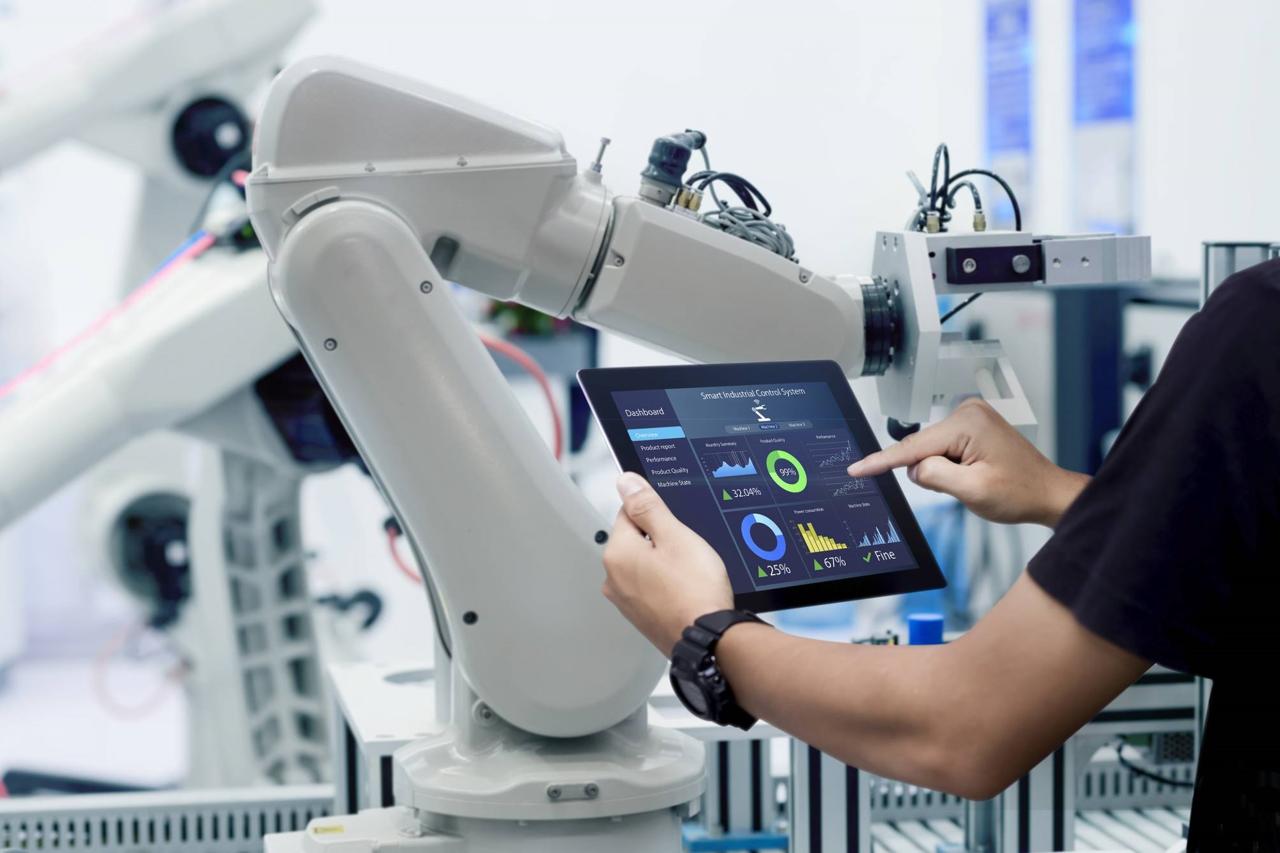
While automation offers immense benefits, its rapid advance brings forth profound ethical, economic, and societal questions that demand thoughtful consideration.
A. Job Displacement and Workforce Transformation
This is arguably the most significant and debated challenge.
- Automation of Routine Tasks: Jobs involving repetitive physical or cognitive tasks are most susceptible to automation, leading to displacement in sectors like manufacturing, logistics, and administrative support.
- Skills Gap: Automation creates demand for new skills (e.g., AI specialists, robot technicians, data scientists) while devaluing others, potentially widening the skills gap.
- Reskilling and Upskilling Imperative: Societies must invest heavily in continuous education and training programs to equip workers with “automation-proof” skills (creativity, critical thinking, emotional intelligence, complex problem-solving).
- Income Inequality: If the benefits of automation primarily accrue to capital owners, it could exacerbate wealth disparities.
- Universal Basic Income (UBI): Some propose UBI as a potential safety net to support individuals whose jobs are significantly impacted by widespread automation.
B. Bias and Fairness in Automated Systems
Automated systems, particularly those powered by AI, can perpetuate and amplify human biases.
- Algorithmic Bias: If training data reflects historical biases (e.g., in hiring, loan applications, criminal justice), the automated system will learn and reinforce those biases, leading to discriminatory outcomes.
- Lack of Transparency (Black Box AI): The complexity of some AI models makes it difficult to understand how decisions are made, challenging accountability and trust.
- Fairness Metrics: Developing and enforcing metrics to ensure automated decisions are fair and equitable across different demographic groups.
C. Data Privacy and Security
Automation relies heavily on data, raising concerns about privacy and security.
- Massive Data Collection: Automated systems, especially those using IoT and AI, collect vast amounts of personal and operational data.
- Vulnerability of Automated Systems: If an automated system is hacked, it could expose sensitive data or be manipulated to cause physical harm.
- Surveillance Risks: Automation can enable more pervasive monitoring of workers (e.g., performance tracking) or citizens (e.g., public surveillance cameras), raising privacy concerns.
D. Accountability and Liability
When an automated system makes a mistake or causes harm, determining responsibility is complex.
- Autonomous Systems Accidents: In the event of an accident involving an autonomous vehicle or industrial robot, who is liable – the manufacturer, the programmer, the operator, or the AI itself?
- Ethical Frameworks: The need for clear ethical guidelines and legal frameworks to assign accountability for automated decision-making.
E. Human-Robot Interaction and Psychological Impact
The increasing presence of robots and automated systems will impact human psychology.
- Dehumanization: Concerns that excessive automation in customer service or caregiving could reduce human connection.
- Over-reliance and Skill Erosion: Over-reliance on automated systems could lead to a decline in certain human skills.
- Human-Robot Trust: Building trust in automated systems, especially in safety-critical applications.
- Social Isolation: In highly automated workplaces, reduced human interaction could lead to social isolation for workers.
The Road Ahead
The future of work is not simply about whether machines will replace humans, but how humans and machines will collaborate, and how societies will adapt to the profound changes brought by automation.
A. Human-Robot Collaboration (HRC) and Augmentation
The focus is shifting from full automation to human-machine teaming.
- Cobots in the Workplace: The increasing deployment of collaborative robots working safely alongside humans, augmenting their capabilities rather than replacing them.
- AI as an Assistant: AI serving as an intelligent assistant for knowledge workers, automating mundane tasks and providing insights, freeing humans for higher-level creative and strategic work.
- Augmented Reality for Workers: AR glasses provide real-time information, instructions, and remote assistance to frontline workers, enhancing their skills and efficiency.
- Exoskeletons: Physically augmenting human strength and endurance in demanding manual jobs.
B. Education and Lifelong Learning
Adapting to an automated future requires a continuous investment in human capital.
- STEM Education: Stronger emphasis on science, technology, engineering, and mathematics.
- 21st-Century Skills: Cultivating uniquely human skills like creativity, critical thinking, problem-solving, emotional intelligence, adaptability, and collaboration.
- Reskilling and Upskilling Programs: Government and industry-led initiatives to retrain workers displaced by automation or to prepare them for new roles in the automated economy.
- Lifelong Learning: Embracing a mindset of continuous learning and skill development as jobs evolve rapidly.
C. Policy and Regulation
Governments and international bodies must develop robust frameworks to manage the transition.
- Workforce Transition Policies: Policies to support workers through job transitions, including unemployment benefits, retraining subsidies, and job placement services.
- Ethical AI and Automation Guidelines: Establishing clear ethical principles for the design, development, and deployment of automated systems, particularly concerning bias, transparency, and accountability.
- Labor Laws Adaptation: Updating labor laws to address new forms of work, gig economy, and human-robot collaboration.
- Investment in Research: Public funding for research into ethical AI, human-robot interaction, and the societal impact of automation.
D. New Business Models and Economic Structures
Automation will likely drive changes in how businesses operate and value is created.
- Automation-as-a-Service: Businesses can increasingly outsource automation needs without large upfront investments.
- Focus on Innovation: Companies leveraging automation will need to continuously innovate to stay competitive.
- Re-evaluation of Productivity Metrics: Measuring productivity in a human-AI collaborative environment.
- Potential for Increased Leisure: If automation genuinely leads to greater abundance, society may need to rethink the role of work and leisure.
E. Social Safety Nets and Universal Basic Income (UBI) Debate
As automation impacts the job market, discussions around social welfare systems will intensify.
- Strengthening Social Safety Nets: Expanding unemployment benefits, healthcare, and educational access.
- UBI Trials: Continued exploration and trials of universal basic income as a potential means to ensure economic security in a highly automated future.
Conclusion
Automation Transforms Work is not a prophecy of human redundancy, but rather a compelling call to reimagine the very essence of human labor and economic interaction. By offloading repetitive, dangerous, and data-intensive tasks to intelligent machines, humanity is poised to unlock unprecedented levels of efficiency, productivity, and the capacity for higher-order creativity and problem-solving. While the challenges of job displacement, ethical dilemmas, and ensuring equitable benefits are significant and demand proactive societal engagement, the relentless march of technological progress assures automation’s pervasive influence. As we move forward, the imperative is clear: we must harness automation’s power responsibly, prioritizing human well-being, fostering continuous learning, and crafting a future where human ingenuity and automated intelligence converge to build a more prosperous, sustainable, and fulfilling world for all. The future of work is not just automated; it’s a collaborative endeavor between humans and machines, and it’s being built now.

